Bethphage is a Christian religious site on the Mount of Olives east of historical Jerusalem. Bethphage is mentioned in the New Testament as the place from which Jesus sent his disciples to find a colt upon which he would ride into Jerusalem. Moreover, the Gospels mention it as close to Bethany, where he stayed immediately before his triumphal entry into Jerusalem. Probably in the time of Jesus, it was a Jewish village.
A Little More About Bethphage
Furthermore, the meaning of Beitphage can probably be deduced from Hebrew. Because the village grew figs (Pagi in Hebrew is an unripe fig); indeed, in the New Testament, it is said that Jesus, on his way from Bethany to Jerusalem, wanted to pick a fig that grew nearby and did not find fruit on the tree. The incident is described in the Gospel according to Mark 11.
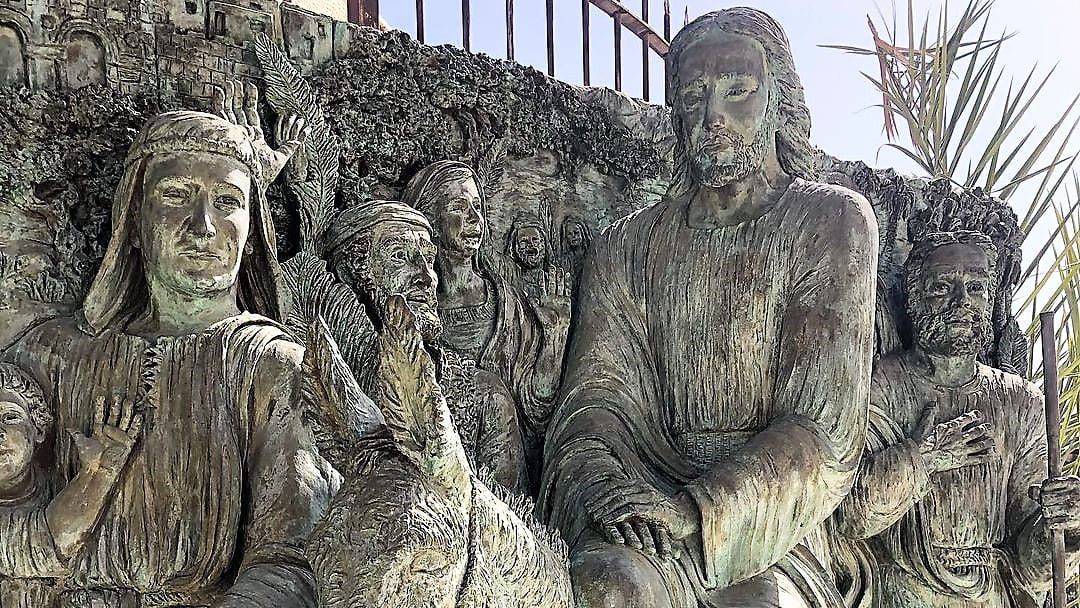
Unknown villagers living there, the owners of the colt, according to the Gospel of Luke 19:33, permitted Jesus’ disciples to take the colt away for Jesus’ triumphal entry into Jerusalem. There is an annual Palm Sunday walk into Jerusalem, which begins here. Eusebius (Onom 58:13) located it on the Mount of Olives. It was likely on the road from Jerusalem to Jericho, and the limit of a Sabbath-day’s journey from Jerusalem is 2000 cubits. There is the Franciscan Church of Bethphage at a likely location.
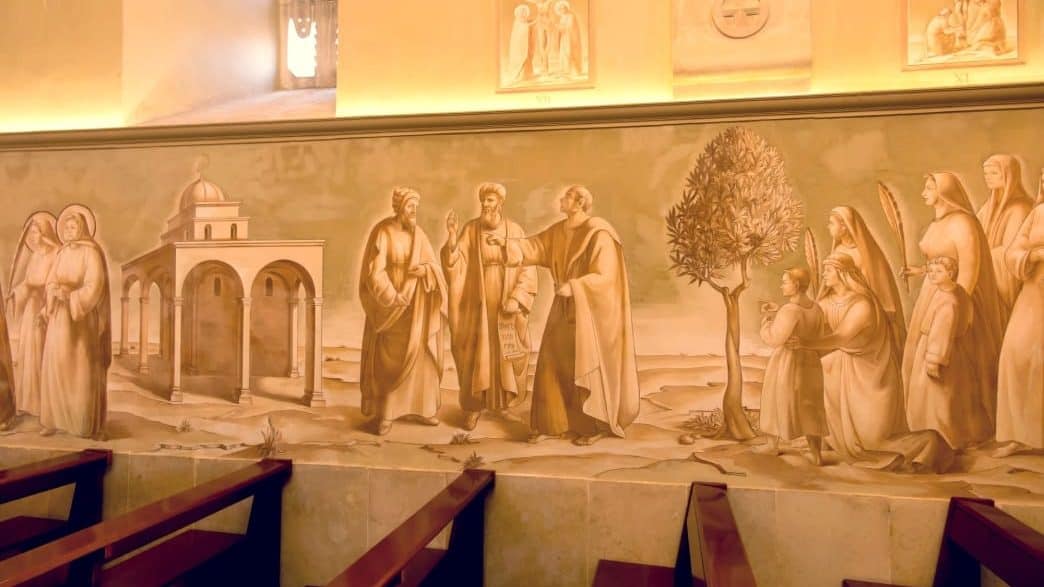
The Location of Bethphage
According to the Gospels, the location of Bethphage is on a mountainside. Now, the three synoptic gospels describe the story of the colt that Jesus asked his disciples to bring to him on his way from Jericho to Jerusalem. The literary evidence about the Second Temple period Jewish village joins archaeological finds in the compound of the Franciscan church of Bethphage on the eastern slope of the Mount of Olives.
Mount of Olives
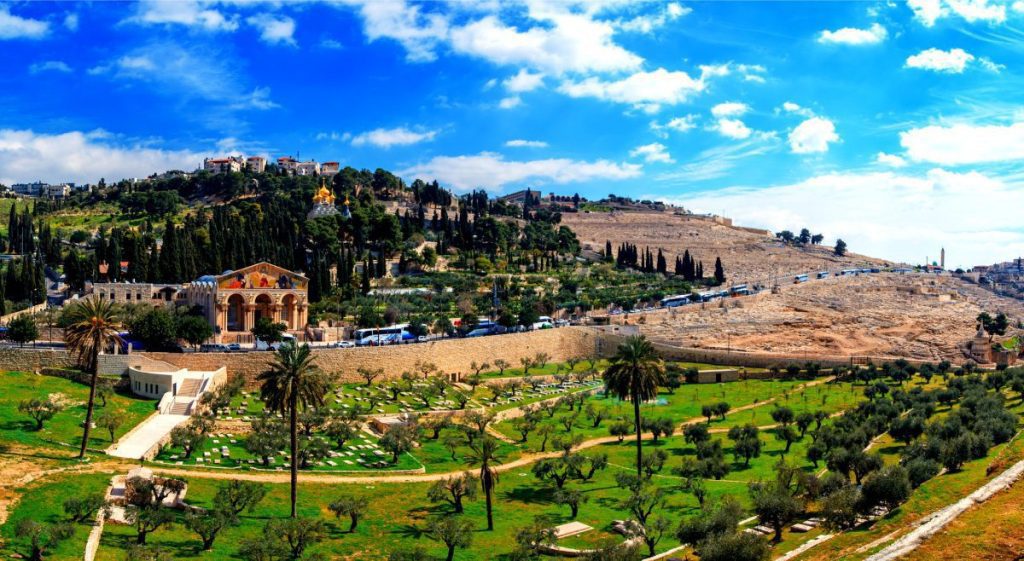
Palm Sunday Procession
As Jesus approached the descent of the Mount of Olives, he received a reception worthy of a king from the crowd of admirers and followers who placed their clothes on the way, waved palms, and cheered him, “Welcome in the name of the Lord.” And called him “Son of David” and “King of Israel.” This is the source of the custom of carrying palms for the Palm Sunday procession.
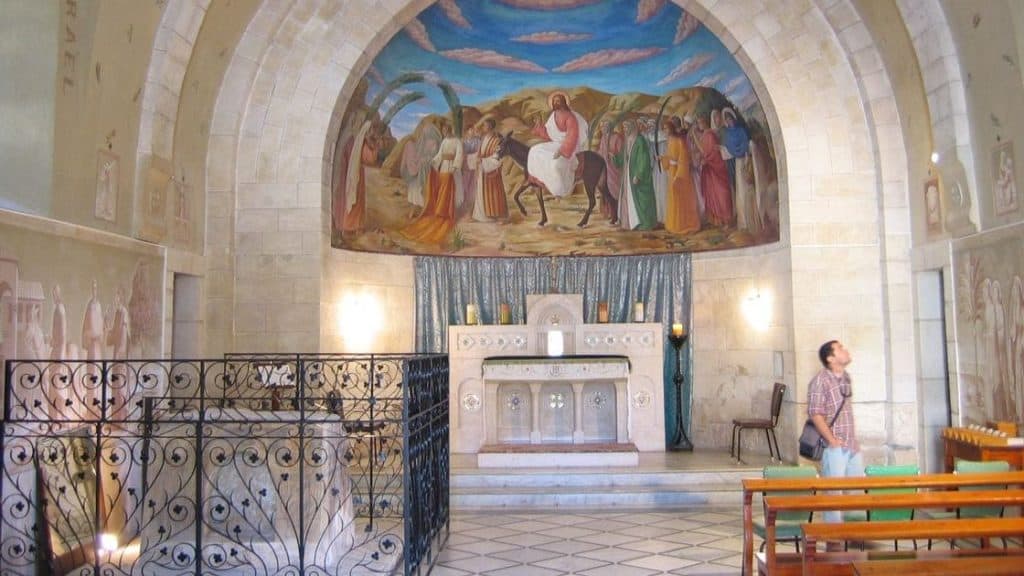
Although in the Christian tradition, it is accepted that Jesus’ entry into the city was on Passover. In fact, after a close reading of the biblical account, the Jewish practices of the Feast of (Tabernacles) Sukkot can be noticed. For example, lulavim (palms), the recitation of “Hosea Na,” and “Welcome in the name of the Lord.” In addition, getting figs is also possible only around Tabernacles (Sukkot)and not during Passover.
Archaeology in Bethpaghe
A niche cave typical of the Jerusalem burial form in the late Second Temple period, including ossuaries and pottery vessels, was found at the site. In addition, agricultural facilities such as wineries were also found. Furthermore, the site also contains the remains of two churches: a Byzantine church and, above it, the remains of a Crusader church.
The most fascinating find at the site is the rock known as the Stele of Bethpage, which was unearthed during the dedication of the Franciscan Church in the 19th century. It is a large stone block belonging to the crusader apse of the Church.
Archaeological Remains
The rock dates to 1170 and is decorated on four sides with scenes from the New Testament: the resurrection of Lazarus, the mission of the two disciples to find Jesus a colt, the entry of Jesus into Jerusalem, and Jesus with Martha and Mary. So, the Crusaders believed that Jesus used this rock to get on the donkey. The rock is now fenced with an iron lattice, and behind it is a mirror so that the decorations can be easily seen on all sides. See the photo below!
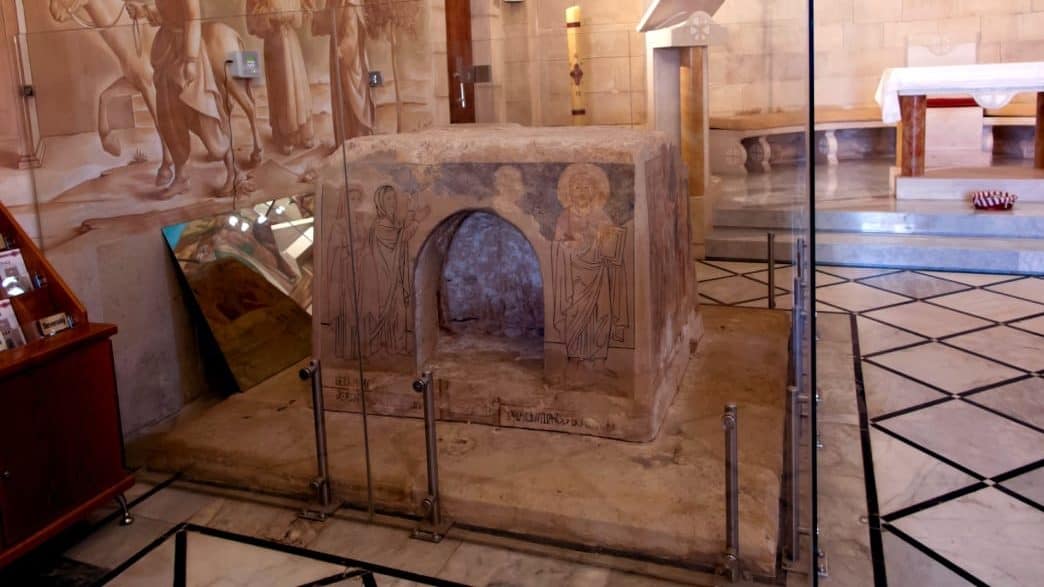
The Modern Church of Bethphage
Last, the modern church at Bethphage was built in 1883 on the remains of previous churches. The church was renovated, and a tower was added in 1954 by Antonio Barluzzi. The church was built in the Crusader style and stands out in its difference from the nearby Greek Orthodox Church, which has a red-tiled roof.
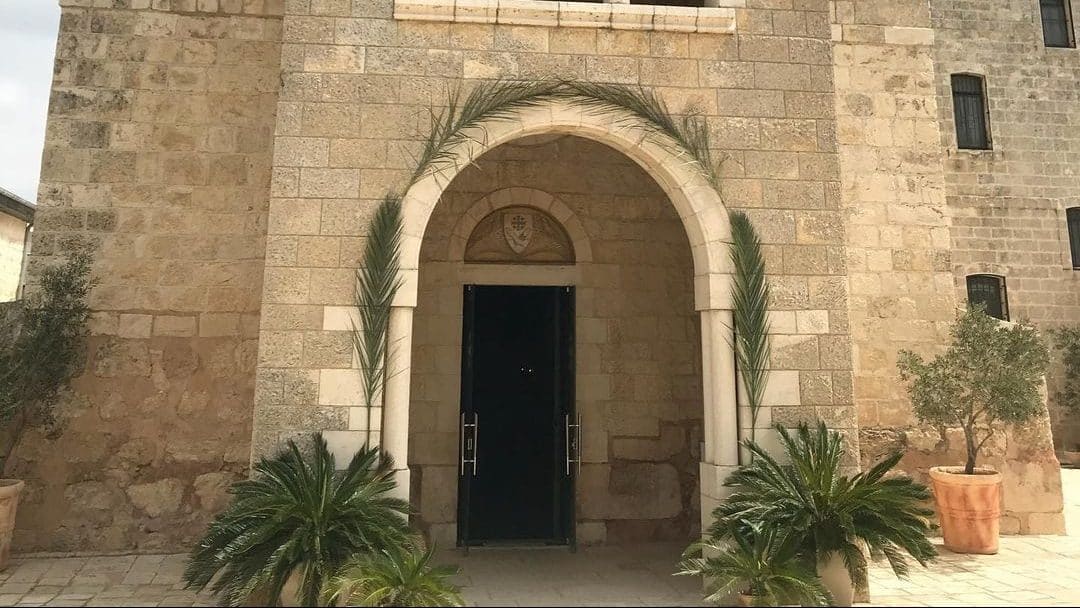
Furthermore, the frescos on the rock were restored in 1950 by the artist Cesare Vagarini, who later adorned the new church’s walls with frescoes in a similar style. Last, the murals depict an audience preparing for the procession of Jesus. So, on another wall are Jewish priests holding a scroll containing words from the Gospel according to John 12:19. Decorating the windows, sentences said to Jesus as he entered the city are written in Latin. Here is a link to Custodia.







